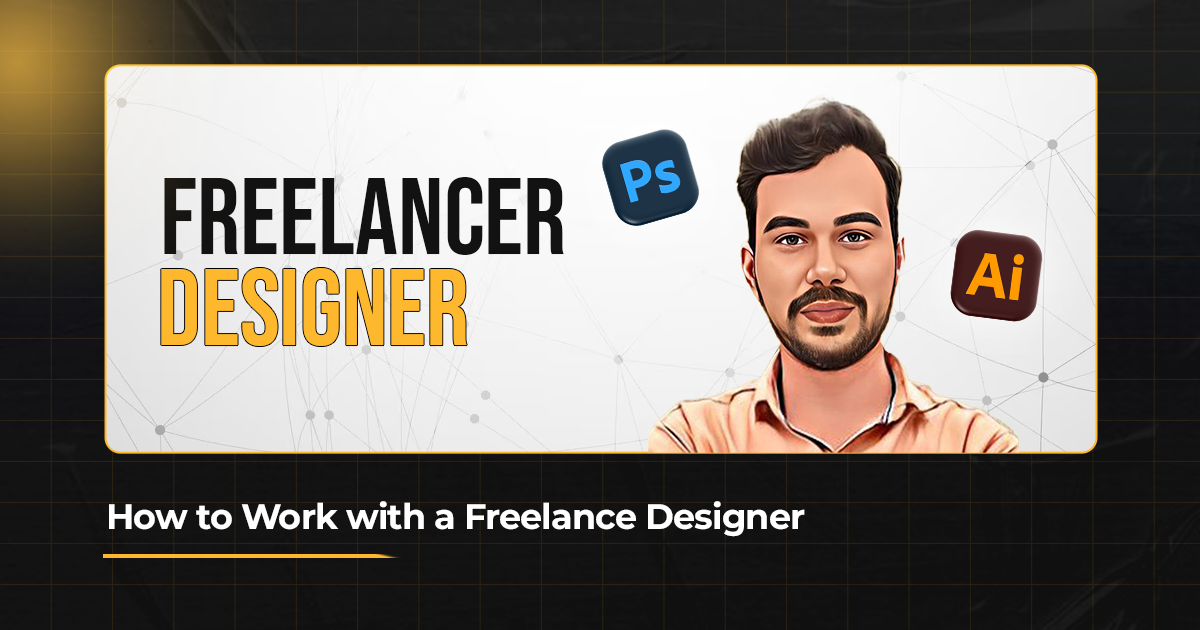
An ideal design can be the difference between success and failure in a competitive business environment. Designers who work on a freelance basis can be viewed as valuable assets to individuals and companies looking for quality design services without employing permanent members of staff. However, to avoid any possible misunderstanding and manage the relationship properly, it is imperative to remember the small details that define the type of relationship one has with the designer.
Also Read: The Role of Graphic Design in Advertising
- Specify the Details of your task and their End Goal
It is important to have a clear understanding of the task in front of them and the necessary details before one attempts to contact a freelance designer. If one requires a logo or packaging or web development, they need to be precise in what they want. This also helps the other party to comprehend how they envision the task to be carried out to better prepare for the project in hand.
Key Points:
State the rationale behind doing such design work (for instance, enhancing a brand’s visibility or providing a better experience for the users).
State the clear outcome of the tasks (for example, 10 social media templates, 5 webpages which a designer needs to work on).
Assign progress targets and deadlines for various aspects of the work.
- Investigate and Engage the Appropriate Designer
Freelance designers are not just specialists in one niche, but have their own unique styles. Take these into account when searching for a designer that suits your project:
- Review their previous works through their portfolio.
- Legal papers emphasizing the client’s brand and style features and requirements.
- Reliability and quality assurance through testimonials and reviews of the clients.
Upwork, Fiverr and Behance are freelance platforms that provide designers with particular skills. Additionally, LinkedIn and forums can aid in discovering qualified personnel.
Key Points:
Seek out relevant background in your area of industry
Emphasize on the communication and response skills
Confirm their capacity to complete the tasks in time.
- Drafting an All-encompassing Agreement
An appropriate document which articulates the arrangements between the parties is the key to a proper working relation. The contract affords protection to both parties, defining what each is supposed to do and what is expected of them. At a minimum, your agreement should include:
Scope of Work: This is expected to comprise all deliverables and services to be carried out by the designer.
Timeline: The time set in the bidding of the proposal. That includes the start and end times, deadlines for drafts, and revisions.
Payment Terms: This should include total cost, terms of payment (when should the milestones of the payment be, or be hourly rate etc).
Ownership Rights: Here, indicate whether the ownership was to remain with you or whether the intellectual property.
Key Points:
Always negotiate and agree in writing to avoid misunderstandings.
Settle the processes for revision and how further requests will be handled.
Make a non-disclosure clause in relation to the sensitive information shared.
- Communicate Effectively
To make collaborations work, it is fundamental to communicate openly and often. From the very start decide on some clear channels of communication whether it is through emails, video calls or via project management tools like Trello, Asana, or Slack. Provide them with reference materials, mood boards, or images of designs that you like so they adhere to your vision.
Key Points:
Arrange on a fixed schedule calls to update on the level of completion and any issues around the project.
Always be responsive to feedback, as it may get the project back on the right track.
Do not micromanage giving space for the designer to express their artwork.
- Respect Their Expertise
Your company would not complete the project if it was to rely on the freelance designers to complete the project. It is equally important to give your core ideas and expectations but also let them reason professionally. Help them work confidently by suggesting their judgments in the end result will be appealing.
Key Points:
Trying to achieve a final product rather than ordering clients.
Be ready to listen to new ideas that could elevate the standard of your project.
Do not disregard the time they are working and the boundaries around that time.
- Set Realistic Timelines
Just like design cannot be accomplished in haste, any work without adequate time is second best. Work with the designer to set realistic deadlines that include research and drafts and revisions and finally the production as well. There is always scope for flexibility and this will make sure that the designer will be at their best.
Key Points:
When planning deadlines, make sure you incorporate the time needed for revisions.
Do not implement decisions late in the day that might upset the schedule.
Let clients know at the outset if there are any important deadlines to meet.
- Provide Constructive Feedback
Feedback is central to the design, but it is always best how you provide the feedback. Be precise: Be emphatic on the variables and the elements that you like and the ones that you disapprove and give reasons. Never say things like “I don’t like this look” instead say, “I think the font style is too formal for this audience. Can we go with something more trendy?”
Key Points:
Don’t forget to mention what is right and what requires improvement.
Always follow your suggestions with illustrations.
Keep your feedback short and related to the project goals.
- Explore Cost’s Planning and Estimation in Detail
Prices of freelance designers vary from one designer to another depending on their level of expertise, the complexity of the task, and geographical boundaries. Some design professionals opt for hourly rates while others prefer pre-agreed specific rates for work done. It is advisable to agree on the budget beforehand in order to avoid conflicts regarding payments.
Key Points:
Stick to realistic figures, as quality in design means you are making an investment.
Stay clear of rates that appear to be unreasonably low as they may indicate lack of experience.
Make payments on time in order for you to be on good terms and continue working together.
- Make Sure the Files are Delivered as You Hoped
At the end of the project, be certain that you receive all the required files in the most appropriate formats. It can include the core files in editable formats such as adobe illustrator or photoshop files, high-end exports, but not limited to custom ready web pages. It is also important to deal with file exchange consideration during the phase of making the contract.
Key Points:
Compile the original source files in case changes are necessary in the future.
Check whether the files can be used in the media you wish to publish them.
Keep the files in places where they are well kept and will be easier retrieved in the future.
Conclusion
Branding your company could be helped by hiring a freelance designer who would make your ideas come alive. By establishing one’s goals, communicating freely, and allowing them to have their say, a mutually beneficial partnership can be achieved. I would like to add that you have to treat freelancers the right way, which is exactly what I will show you how to do, and they become necessary parts in accomplishing your professional tasks.

